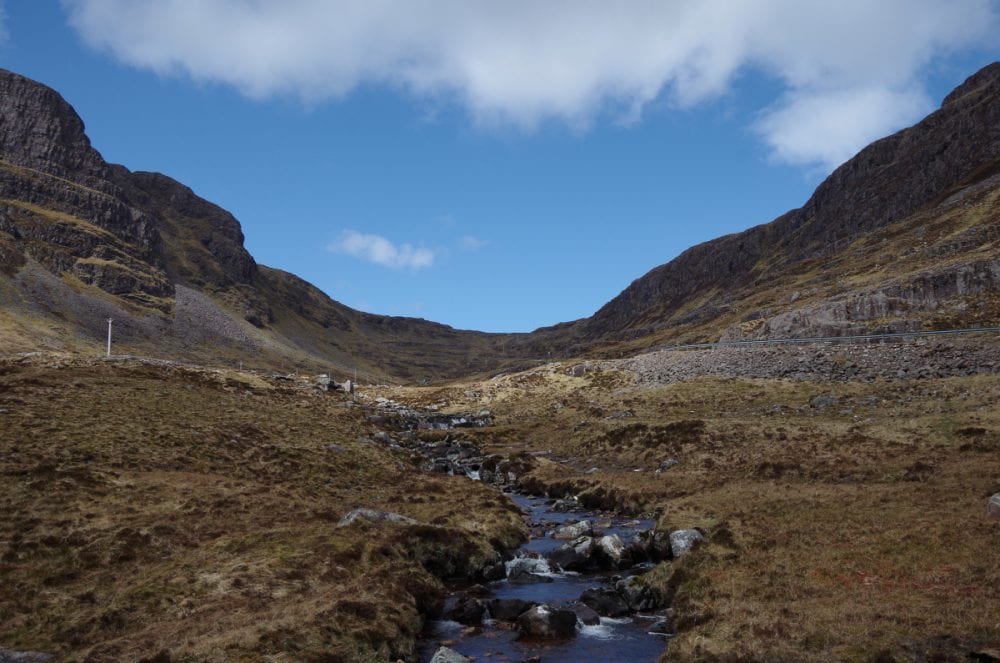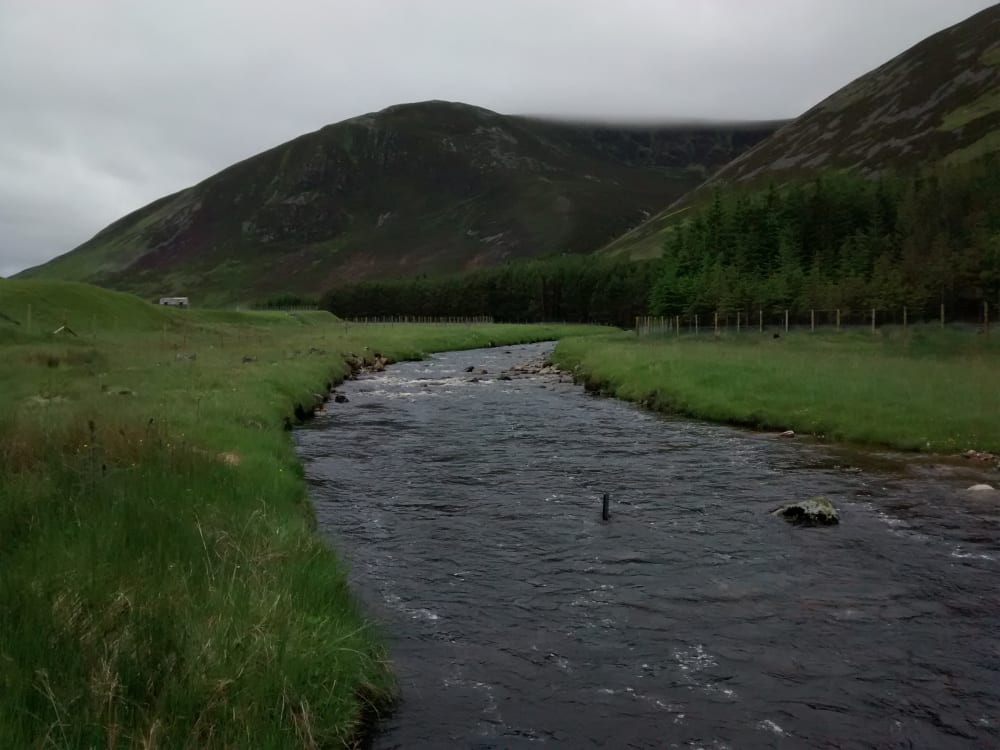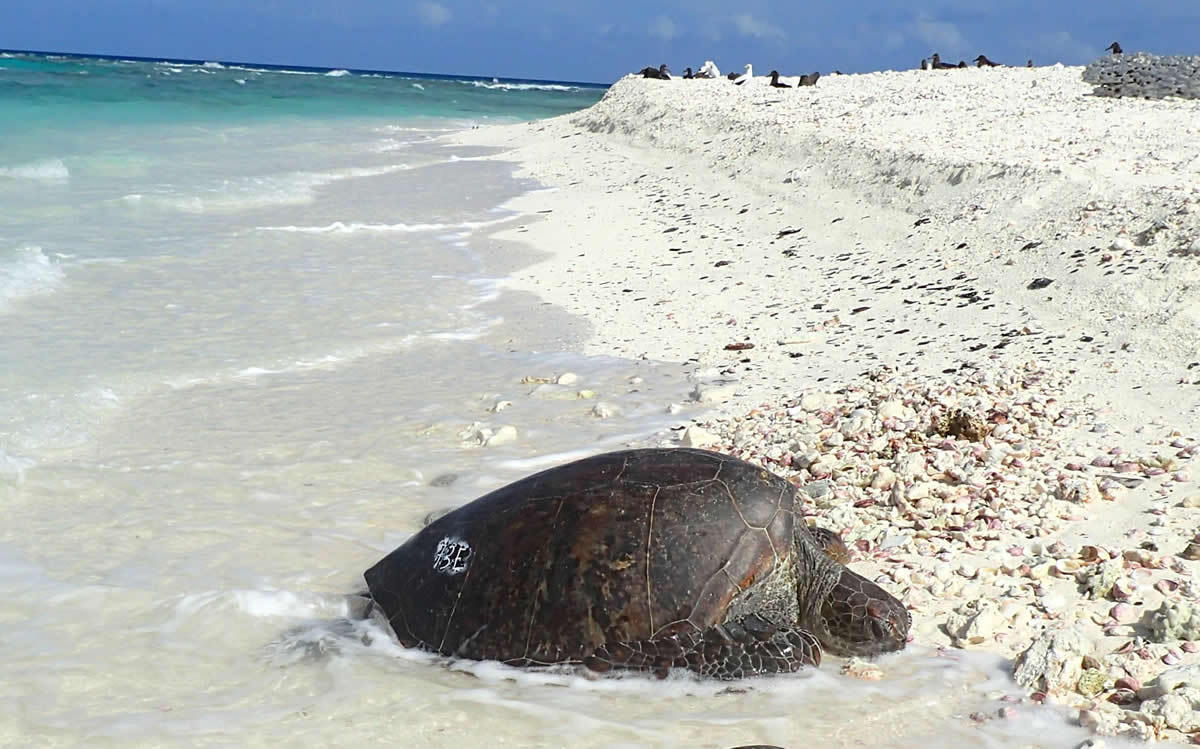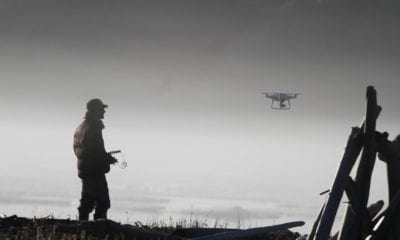
News
Drones Used to Monitor Hot Rivers and Atlantic Salmon
Drones Used to Monitor Hot Rivers and Atlantic Salmon
Planting trees alongside lakes and rivers is an ancient method used to keep the water cool; this old idea could be back in fashion and might be the answer to dealing with warmer water temperatures as a result of climate change.
Researchers from Marine Scotland Science (MSS) and the University of Birmingham (UoB) have raised concerns over the effect that increasing temperatures due to climate changes is having on rivers, as it is known that salmon and brown trout are relatively intolerant of high temperatures.

Last summer the researchers used a drone, equipped with a high-resolution camera, which was flown over a section of the Girnock Burn, a tributary of the River Dee in Aberdeenshire. Aerial images were taken of this section and then used to create a 3D map of tree heights along its banks. The researchers say the images taken by drones could help towards a better understanding of the beneficial effects of trees shading rivers during hot weather.
The Girnock Burn fish trap is one of three long-term fish monitoring facilities in Scotland established in the 1960’s and provides detailed information on adult and emigrant numbers of Atlantic salmon. The Girnock Burn fish population is dominated by spring-run multi-sea-winter adult Atlantic salmon which return annually to spawn and juvenile salmon heading seawards. The Girnock is therefore an immensely valuable and unique research and monitoring facility. The salmon population of the Burn has been the subject of monitoring work for more than 50 years and this latest research could influence and guide the planting of trees where they would have the greatest benefits.

‘Structure-from-Motion’ (SfM) 3D model of Girnock Burn, Scotland showing tree cover. Image Credit: rivertemperature.net
According to Marine Scotland the drones could offer a low-cost method of studying remote stretches of rivers in Scotland, and the rest of the UK and the information gathered by drones could be used to develop targeted planting at locations where trees would have the “greatest benefits in reducing the effects of climate change”.
The research on the Girnock Burn forms part of the EU-funded HoTRiverS project (Heterogeneity of Temperature in Rivers and Streams) project which is demonstrating how cutting-edge technology can inform river management and policy in the fight against climate change.
Scotland’s rivers are most likely to feel the impact of climate change through an increase in water temperature, particularly during summer months. To many fish, in particular Atlantic salmon and Brown trout, stream temperature is of the utmost importance for the growth and survival of the species and both are relatively intolerant of high temperature. So there are genuine concerns that elevated stream temperature could alter the thermal suitability of Scotland’s rivers to a range of native freshwater species. This has resulted in a collaboration between MSS and UoB on a number of projects to better understand stream temperature patterns in Scotland’s rivers and identify strategies for reducing the impacts of climate change on stream temperature. The researchers suggest that a better understanding of the role of trees in reducing stream temperature might be best achieved with the ability to better characterise both tree cover and the effects of river bank-side shading; a difficult and costly exercise, especially in remote locations.

Optical (left) and thermal (right) image mosaics of Baddoch Burn, Scotland
The HoTRiverS project teams’ use of a drone (a small unmanned quadcopter equipped with a high-resolution camera) to obtain high resolution aerial photographs addressed this problem. The team say this new low-cost, high-accuracy technique has the potential to improve our understanding about how and where tree shading produces optimal stream temperature reductions.
The HoTRiverS project is highlighting other ways in which drone technology can help scientists to better understand stream temperature patterns. Previous research has shown how airborne thermal infrared (TIR) river surveys can be used to identify important cool-water habitats used by salmon and trout during summer high temperature, a very costly exercise with the location of these critical habitats often remaining unknown.
By using a drone equipped with a miniaturised thermal infrared imaging camera to map surface water to show microclimate and heat exchange processes, then combining the datasets, it will be possible to develop a high resolution computer model capable of characterising the physical processes (ie. solar radiation, evaporation, groundwater inputs) that drive observed stream temperature patterns in the burn.
This collaboration between MSS and UoB demonstrates how advances in geospatial technology and computer modelling are helping to better understand and protect Scotland’s freshwater environments. change and river temperature with a view to preserving Scotland’s valuable rivers and fish populations for future generations.
While this is very much a work in progress and the analysis of the data ongoing, it seems clear that the drone-based thermal imaging data will be useful for detecting small-scale variations in surface water temperature that are of key importance to fish and other species.
























